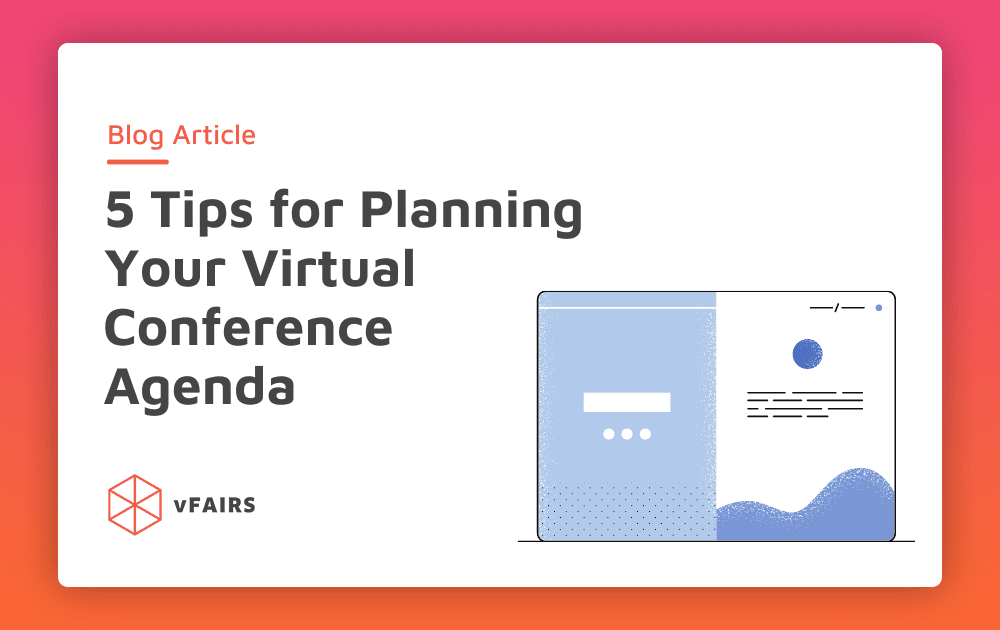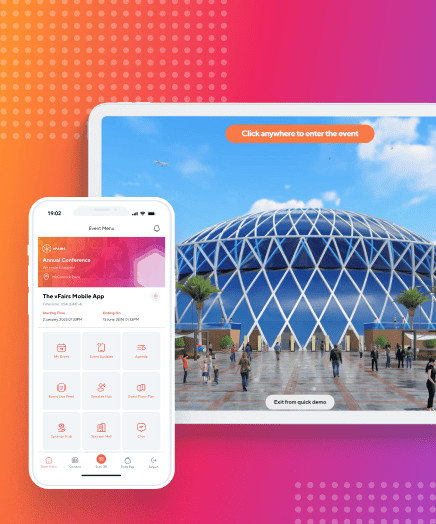How do you create a virtual conference agenda that drives attention and engages your audiences? One key lies in the basic agenda design. Virtual event agendas demand more time and thought as compared to in-person meetings. Especially considering that one of the most challenging parts of an online event is to keep your attendees interested and engaged while sitting in front of their screens.
Why Are Virtual Conference Agendas so Important?
There are two key assumptions you can make about the audience at your virtual conference:
- They could be joining from different time zones than yours
- They have an endless amount of task work and distractions going on as the conference runs
Because of this, your virtual conference agenda has to be planned out in a thoughtful, strategic way that allows people to access content conveniently and gives some breathing room to those with other things going on simultaneously.
Before we dig in deep, as a planner, you need to ask yourself a few important questions. How much reasonable time to expect from your audience to spend at your virtual event? How many online sessions do you expect them to attend? Do you expect your audience to visit sponsor booths? Do you expect attendees to engage with reps or product experts?
It’s time to think about what you want them to do actually. Do you want them to attend sessions? Or do you want them to ask questions, connect with sponsors, and connect with each other? What actions should be taken by the audience in order to make you reach your overall program goal?
This is where your agenda should reflect every point mentioned above, to give attendees the opportunity to engage throughout the event in different activities and make the most of the virtual platform.
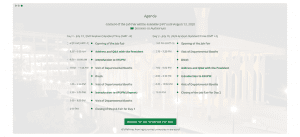
5 Tips to Develop Your Virtual Conference Agenda
Engaging topics and speakers are important considerations for your agenda. However, it is important to ensure that your agenda gets additional attention in order to see your best results..
To help our planners and organizers with the agenda planning process, here are five things to consider as you design the agenda for your virtual conference.
1. Think Digital First
Similar to planning an in-person conference, it is essential to consider what delegates are hoping to get from this virtual event, and how this can easily be achieved with the help of digital touchpoints. You need to mix up the agenda plus the content format. Also, you can use breakout rooms in order to encourage collaboration along with interaction.
Another idea is to consider streaming some presentations to a wider audience. This can be done with the help of a tool called Restream. The tool will allow you to share live feeds on social media channels. This includes YouTube, Facebook, LinkedIn, etc.
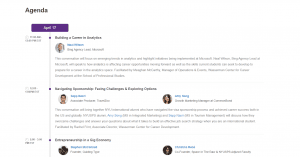
2. Use Add-Ons That Support Your Objectives
When planning a virtual conference, the key is to start with the end in mind. You should design your meeting experience first. Just like planning in-person events, it is important to identify your goals and objectives.
If the virtual event is intended to build brand recognition and cachet, you need to schedule abundant time for the keynote speakers, virtual meet-and-greets, and Q&As. If the goal is networking then breakout sessions, virtual networking events, ice-breaker activities should be your focus. On the other hand, if you’re looking to solicit feedback and get a pulse on your industry, polling, and chat can be enabled as the presentations roll.
When you define your goals and the experience you want to deliver, the result is the ideal information about the design and features of your virtual conference agenda.
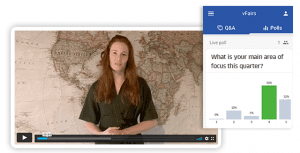
3. Consider the Timing of Sessions
A very critical point to keep in mind is that many of your attendees’ lives and their overall routines have changed dramatically due to COVID-19. Not a single attendee would prefer to sit in front of their computer for several hours to listen to a nonstop series of speakers.
Instead of hosting a typical virtual conference that will continue over three consecutive eight-hour days, consider expanding your virtual conference to five days or even nine days where you only engage the attendees for a few hours on a daily basis. People working with vFairs, who tried to create one long 12-hour conference instead decided to switch to a 2-day conference. They also kept the information live for another few weeks. Not only this but a number of vFairs’ clients are willing to host 2 live days. Later on, they let attendees revisit anything they missed over the following month.
Also, don’t forget to make sure the content is available online for a set time period. In this way, participants will be able to interact with the material at their best leisure. This is important as your attendees’ time zones may now vary a lot.
4. Schedule Regular Breaks
Along with the basic food and bathroom breaks, some unstructured time between sessions will allow your attendees to check in with other participants who may also be sharing the same conference space, catch up on email, take a break from sitting and prepare for the next upcoming round of activities.
Encourage your attendees to take breaks. Also, make it clear that downtime is encouraged by providing this time within the virtual conference agenda. You can offer entertainment breaks right within the event platform. Mindfulness sessions, non-work activities, and yoga breaks will give attendees a sense of action. Simply, without burning out, help them unwind and take in more.
At the same time, never forget that even your speakers and presenters need time in order to prepare between sessions. For a smooth session delivery, it is vital to log into the virtual platform beforehand, test slides ahead of the schedule, and ensure technology is all running smoothly. With these considerations in mind, you will be perfectly ready to design an impactful virtual conference agenda.
5. Choose the Right Session Delivery Mechanism
Virtual conferences are packed with a variety of session styles to choose from. This includes live sessions, pre-recorded sessions, and a combination of the pre-recorded sessions along with a live feature. All these styles come with their own pros and cons. For example, live sessions allow you to interact with speakers, but the bad thing is the major risk of technology failure. On the other hand, pre-recorded sessions allow attendees to view sessions whenever it’s convenient for them but lack an engagement opportunity.
There is no wrong answer for virtual conferences because all you need to think about is how these items will potentially affect the agenda. For example, in the case of pre-recorded sessions, you can easily release them separate from the formal conference agenda. In this way, you will be able to share more live or simulive content.
You can also offer corresponding live Q&A sessions in order to mitigate technical difficulties. Make sure you still allow for engagement with session speakers.

Conclusion
We all know that face-to-face events will return eventually but it’s no surprise the event landscape has been changed forever. The value and benefits provided by the digital events are apparent. As a result, virtual events are slowly going to be an essential part of your upcoming communications capabilities.
Audiences are now considerably more value-conscious after a year of adapting to a more virtual way of working in terms of their attendance at events. People usually expect greater quality content, entertainment, and networking, in return for their time. Therefore, a greater need to plan and execute a virtual conference agenda, to get the best possible engagement and results, is a must.

